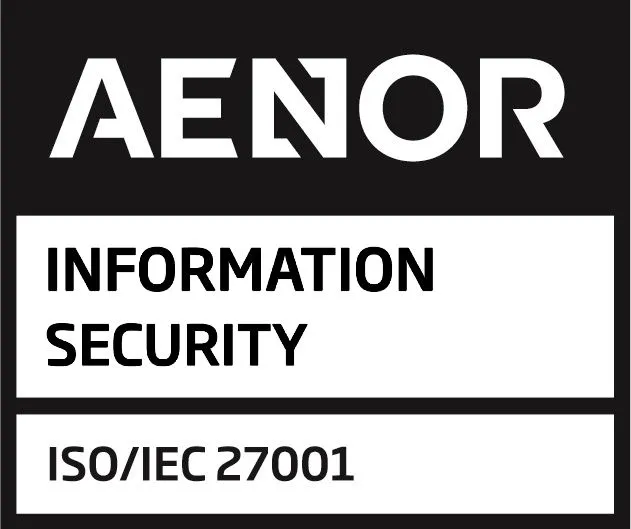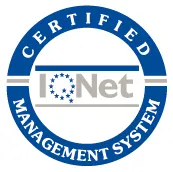
Creating an employee satisfaction survey is no longer a luxury—it’s a strategic necessity. It has become an essential tool to grasp how people feel within your organization and what needs improvement. But sending out a form isn’t enough: the effectiveness of a survey depends on its design.
Table of Contents
Many HR and employee experience professionals face the same challenge: what questions should we ask? How can we ensure the responses are honest and valuable? In this article, we guide you step by step to design a truly meaningful employee satisfaction survey. From common mistakes to practical question examples, we provide everything you need to make your next survey a game-changer.
Why it’s important to measure employee satisfaction
A well-designed employee satisfaction survey serves not only to “take the team’s pulse” but also as a strategic instrument to drive continuous improvement within the organization. When employees feel heard, their engagement, productivity, and retention increase, giving your company a clear competitive edge in a tight labor market.
These surveys enable HR departments to identify issues early, uncover cultural improvement opportunities, and streamline internal processes. A satisfied team is more collaborative, innovative, and resilient in the face of change.
One widely used metric in this context is eNPS (Employee Net Promoter Score), which measures how likely employees are to recommend the company as a place to work. Its simplicity and predictive power make it a key ally for continuously evaluating organizational health.
Measuring satisfaction is, ultimately, an act of conscious leadership. It demonstrates, in practice, that every individual’s opinion matters and that the organization is willing to evolve with its people. As highlighted by the OECD, employee satisfaction is a key indicator of workplace quality and organizational performance—making it not just a cultural concern, but an economic one too.
Common mistakes when conducting an employee satisfaction survey
Creating an effective employee satisfaction survey goes far beyond launching a randomized form. Frequent mistakes can undermine data quality and employee trust:
- Surveys that are too long: If it takes more than 15 minutes, respondents may abandon it or provide careless answers. Respect your team’s time.
- Biased or poorly worded questions: Avoid leading or confusing questions. For instance, “Do you agree that our leadership is exemplary?” suggests a positive answer and can intimidate.
- Lack of follow-up action: Collecting opinions without implementing changes erodes trust. Communicating results and next steps is as vital as launching the survey.
- Failing to guarantee anonymity: If employees doubt confidentiality, they’ll respond cautiously or opt out. Ensure anonymous channels and clearly explain how responses are handled.
- Deploying the survey at the wrong time: Avoid scheduling during fiscal closes, vacations, or peak workload. Timing affects both response rates and quality.
- Not adapting the language to the audience: A survey filled with jargon or complex terms can alienate operational staff. Keep the language clear and accessible.
- Reusing the same survey year after year: Environment and needs evolve. Using identical questions without updating them limits your ability to gather relevant insights.
Avoiding these pitfalls can make the difference between a survey that’s ignored and a powerful tool for cultural transformation.
Best practices for building an effective employee satisfaction survey
A well-designed employee satisfaction survey not only gathers data, but builds trust, commitment, and real opportunities for improvement. Here are best practices that make a difference:
- Clarify the objective: Ask yourself: what do we want to discover? This focus helps you stay on topic.
- Keep it concise and focused: Aim for 10–15 minutes. Group similar questions (leadership, culture, recognition, etc.) and remove redundancies.
- Use a mix of question types: Combine rating scales, open-ended questions, and multiple choice for a balanced approach.
- Communicate purpose and process clearly: Explain why the survey is being conducted, how results will be used, and how confidentiality is protected.
- Ensure anonymity and voluntariness: Honest feedback is only possible when employees feel safe. Use trusted and anonymous tools.
- Choose the right timing: Avoid high-stress periods. Surveys sent during calmer times generally receive better responses.
- Share the results and act on them: Closing the feedback loop is crucial. Summarize findings and present an action plan—transparency builds trust.
- Use an intuitive, professional tool: Choose a platform that supports design, distribution, customization, anonymous responses, data export, and result visualization. A good tool enhances both user experience and analysis efficiency.
By following these principles, your employee satisfaction survey won’t just be efficient—it will be respected and valued by your team.
Want to design effective employee surveys? Find out how Vip Connect can help you customise them and optimise your employees’ experience.
Key question types (with examples)
The effectiveness of your employee satisfaction survey depends greatly on the mix of question formats. Here’s a breakdown:
Rating Scale Questions (1–5 or 1–10)
What they are: Numerical scales measuring agreement, satisfaction, or frequency.
When to use: To quantify perceptions and identify trends like workplace climate or leadership quality.
Advantages: Easy to analyze and compare over time.
Examples:
- How would you rate your overall job satisfaction?
- To what extent do you feel recognized for your daily work?
- How accessible is your direct manager?
- How often do you feel your work makes a real impact on the organization?
Closed Questions (Yes/No or Multiple Choice)
What they are: Pre-defined response options.
When to use: For clear, structured data, ideal for statistical analysis or segmentation.
Advantages: Quick to answer and simple to compare across groups.
Examples:
- Do you have a clear understanding of your job expectations? (Yes / No)
- In the past 3 months, have you had any feedback conversations? (Yes / No)
- Do you have the necessary resources to do your job well? (Yes / No)
- Which of these aspects is most important to you for workplace well-being?
- a) Flexibility
- b) Recognition
- c) Professional development
- d) Salary
- e) Other: _______
Open-ended Questions
What they are: Free-text response questions.
When to use: To collect new ideas, deep insights, or unexpected feedback.
Advantages: Provide context, nuance, and can uncover hidden issues.
Examples:
- What would you change in your work environment to feel more satisfied?
- What motivates you to stay with this company?
- Do you have any suggestions to improve internal communication?
- What do you value most about working here?
Thematic Dimension Questions
What they are: Groups of questions focused on specific areas like leadership or workplace culture.
When to use: To evaluate key influencing factors in employee experience.
Advantages: Allow deep analysis and targeted improvement plans.
Examples by dimension:
Leadership
- Do you trust the decisions made by senior management?
- Do you feel your ideas are heard by your manager?
- Do you receive useful, regular feedback from your manager?
- Do you believe leadership fosters a fair and inclusive environment?
Workplace Culture
- Do you feel comfortable expressing your opinions with colleagues?
- Is there strong collaboration between teams?
- Do you perceive an atmosphere of respect and mutual support?
- Do you feel part of the company culture?
Recognition & Development
- Do you feel your work is appreciated by the company?
- Are there clear opportunities for professional growth?
- Have you received useful training in the last 12 months?
- Is your progress considered during performance evaluations?
Choosing the right question types enriches data quality and demonstrates a genuine desire to understand your team’s experience.
Adapting surveys by company size or sector
Even though best practices apply broadly, an effective employee satisfaction survey must reflect your company’s specific context. Asking the same questions in a small biotech firm versus a large manufacturing plant won’t work equally well.
By Company Size
- Opt for shorter, more personable surveys.
- Open-ended questions are more impactful, since responses can be analyzed individually.
- Emphasize clear next steps and visible impact from feedback.
Large Companies
- Require structured and scalable approaches—surveys segmented by department or business unit.
- Automation tools are essential for analysis and internal benchmarking.
- Ensuring anonymity is critical for honest responses.
By Industry
Technology & Startups
- Include items on flexibility, autonomy, innovation, and purpose.
- Engagement in decision-making and continuous learning are typically valued.
Retail & On-site Services
- Focus on shifts, in-store climate, supervisor relationships, and physical workload.
- Ensure mobile accessibility and time to respond.
Public Administration & Education
- Include stability, institutional communication, and alignment with social values.
- Formal, clear language is highly important.
Industrial & Logistics Companies
- Ask about safety, ergonomics, task organization, and management treatment.
- Ensure language and delivery channels are comprehensible across education levels.
Adapting your employee satisfaction survey to context demonstrates respect for your team’s reality and improves data quality.
Designing a strong employee satisfaction survey isn’t just about measurement—it’s about setting an intention. It shows the company is ready to listen, understand, and improve. By applying best practices, avoiding common mistakes, and tailoring questions to your organization’s context, a simple survey can become a powerful cultural transformation tool.
Remember: every question counts, and data only matters when it leads to concrete action. Share results, communicate learnings, and collaboratively build a more motivating, human workplace.If you’re planning your next employee satisfaction survey, do it with purpose and strategy. And if you need support or a reliable tool to implement it, we’re here to help.
New to Vip District? Contact us and find out what our platform has to offer!








